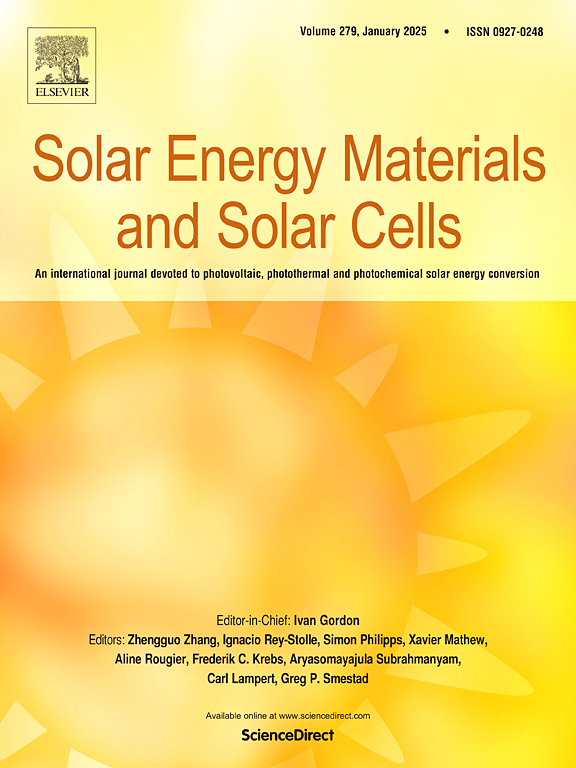突破边界:为新应用领域制造和设计光伏组件时出现的挑战
IF 6.3
2区 材料科学
Q2 ENERGY & FUELS
引用次数: 0
摘要
这项工作讨论了光伏(PV)市场趋势所带来的挑战,新电池类型和用于特殊应用的模块,如车辆集成光伏(VIPV),建筑集成光伏(BIPV)和道路集成光伏(RIPV)。与标准模块相比,用于新应用程序的模块通常必须满足额外的要求,而新单元类型的敏感性使情况变得更加困难。这些要求包括美观,处理3D弯曲形状,遮阳弹性和减轻高速公路上用作隔音屏障的模块的太阳反射率等。为了满足这些要求并处理新的电池技术,物料清单(BOM)也可能需要调整。随着太阳能电池从PERC向更高效的串联电池的转变,组件的制造过程需要适应工艺参数。我们的研究表明,PERC电池可以在180°C的温度下在短时间内进行层压。相比之下,钙钛矿硅串联电池(PVST)对高温更敏感,需要使用低温层压工艺。我们已经开发了一个内部模拟工具,通过在层压过程中对模块中的温度和凝胶含量曲线进行建模,帮助优化工艺参数。本研究旨在展示新技术的挑战,并着重于其制造过程和设计阶段的可能解决方案。本文章由计算机程序翻译,如有差异,请以英文原文为准。
Pushing the boundaries: Challenges that arise in manufacturing and designing photovoltaic modules for new application areas
This work discusses challenges arising from the trends in the photovoltaic (PV) market, for new cell types and for modules used for special applications such as vehicle-integrated photovoltaic (VIPV), building-integrated photovoltaic (BIPV), and road-integrated photovoltaic (RIPV). In contrast to standard modules, modules for new applications often must fulfill additional requirements, and the sensitivity of new cell types makes the situation not easier. These requirements include aesthetical look, dealing with 3D curved shapes, shading resilience and mitigating sun reflectance of modules used as noise barriers on highways etc. To meet these points and to handle the new cell technologies the bill of materials (BOM) also may need to be adjusted. With the shift in solar cells from PERC to more efficient Tandem cells, the manufacturing process of modules requires adaptation of process parameters. Our study demonstrates that PERC cells can be laminated at temperatures up to 180 °C in a short duration process. In contrast, Perovskite Si-tandem cells (PVST) are more sensitive to high temperatures, necessitating the use of low-temperature lamination processes. We have developed an in-house simulation tool that helps to optimize the process parameters by modeling the temperature and gel-content profile in the module during the lamination process. This research aims to show the challenges of the new technologies and focuses on possible solutions in terms of their manufacturing process and design phase.
求助全文
通过发布文献求助,成功后即可免费获取论文全文。
去求助
来源期刊

Solar Energy Materials and Solar Cells
工程技术-材料科学:综合
CiteScore
12.60
自引率
11.60%
发文量
513
审稿时长
47 days
期刊介绍:
Solar Energy Materials & Solar Cells is intended as a vehicle for the dissemination of research results on materials science and technology related to photovoltaic, photothermal and photoelectrochemical solar energy conversion. Materials science is taken in the broadest possible sense and encompasses physics, chemistry, optics, materials fabrication and analysis for all types of materials.
 求助内容:
求助内容: 应助结果提醒方式:
应助结果提醒方式:


